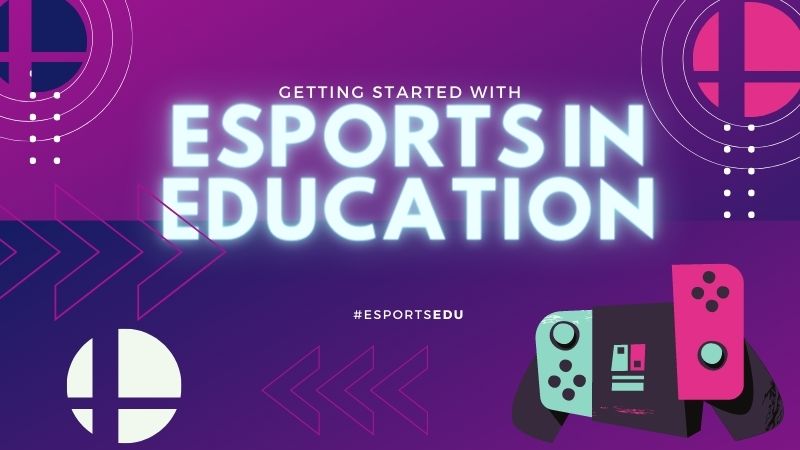You’ve done your research and have seen the many benefits of starting an esports program for your school district. For example, providing a program where different students can grow will result in more students joining your school, and you already know this. You can see that you want to join esports leagues in the future. But you may ask…
How do I start an Esports Program in my school?
This article will show you how to start an esports program in your school district by covering:
- Diversity,
- Scholarships,
- What game & console?
- Registration Form,
- Handling a Bracket,
- Calulating Time,
- Streaming the Event,
- Funding.
My school district is just starting, and this is my experience so far. You may want to take a different approach depending on what fits your situation.
Diversity.
Some students will join because it is gaming. However, this needs to be promoted to the students you don’t see. Target different ethnicities, genders, mental & physical capacities, etc. From there, have rules regarding academics. For example, should students maintain a passing grade? What about students with disabilities? What about students who are in AP or Dual Enrollment?
Scholarships.
The popularity of Esports is continuing to grow. With that, so is the money involved in creating programs like Esports in Education. Many universities are already providing scholarships for students who excel in esports. Here’s a list of some universities that offer esports scholarships related to the game you will need to start.
Game & Console.
Although starting strong may be an option for some, it is essential to be inclusive. Super Smash Bros. Ultimate (SSBU) on the Nintendo Switch is rated for 10 and up. This includes elementary students. Also, the previous colleges have scholarships for this game. The console comes with a pair of controllers. However, you may need an extra pair of Joy-Cons or two Pro-Controllers for each Console and Game set that you purchase.
Registration.
When registering students, keep in mind student privacy. One suggestion is to create a form asking for name, school ID number, school/team, and gamer tag. The idea is that Gamer Tags will show instead of their names.
Brackets.
You will want to create a fast way to track esports’ scores. Challonge allows for the easy creation of tournament brackets. The free version contains ads, but it works great.
Here are some suggestions for SSBU:
- The description should include the rules,
- Single Stage,
- Double Elimination,
- 1-2 matches.
Under Advanced in different tabs, include:
- Customizable labels,
- Quick advance,
- (do not) Allow participants,
- Share admin access (with those who will help),
- Exclude this event from search (for more privacy),
- (no) Notifications,
After creating the tournament, you can create the Stations if you have more than one Game & Console. This can keep track of who is going to which station. Try several practice tournaments before making a real one.
Calculating Time.
When planning for a tournament, you will have to think about how the length of the tournament.
- How many matches in a tournament?
- How long does a tournament last?
This will depend on how many students are participating and how long each match is. The following Google Sheet will help you answer those two questions.
A few details to consider are:
- Under counts, what information do you have?
- You will have four sections to choose from. Match the orange portion to the info you are filling out.
- Next, will it be single or double elimination?
- Note that games like Mario Kart, already require several races or rounds to be played before determining a winner of the match. Thus, single elimination match will be used.
- Some games allow for a time limit. Otherwise, what is the average time each match (not round or race) will take.
Streaming.
Like any other sport, this will generate an audience. Streaming is an option. You will need a Game Capture Device to stream online. I’m using the MiraBox HDMI Capture Card because I can use a Chromebook to stream.
Directly from YouTube.
A free and easy way to stream is directly from YouTube. However, this only allows for a webcam. The MiraBox acts like a webcam and will work great in this case. However, there will be no commentary.

Google Meet.
The benefits of using Google Meet’s live streaming feature is that only those within the domain will be able to see it. Therefore, student privacy is more secure. This is not free because it requires the paid Teaching and Learning Upgrade.
Multi-Stream.
My personal favorite is StreamYard. It allows multistream to places like Twitch, YouTube, Facebook, etc. There are limitations based on the subscription chosen. The free version is minimal. The basic is what I use for the multistream and a professional look. If you plan on streaming to more than 3 destinations, you may want to upgrade to the next plan available.
Connecting Games to Multi-Stream.
I decided, for now, to only have one station streaming. Even if you are planning to have multiple consoles streaming, I recommend using VDO.Ninja by OBS. That site has multiple functions which pair together with StreamYard and other streaming services well.
Funding.
There are very few grants available for esports. However, here are a few ideas for funding:
- Fundraiser, for example: Sponsors, Entrance Fee, or selling popcorn.
- CTE: Career & Technical Education can open a Game Desing class which is normally available to High Schools.
- DonorsChoose: This grant writing website is only available to teachers and counselors in public schools. Helps funding classroom projects, like esports equipment.
- Croudfunding: There are other websites, like PledgeCents, which allow to raise funds for any schools (private or public). Also, anyone can apply; including School & District Administrators.
Do you have any tips or suggestions?
Let me know in the comments.



